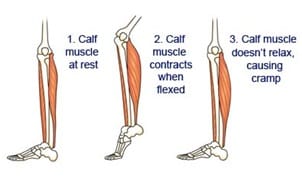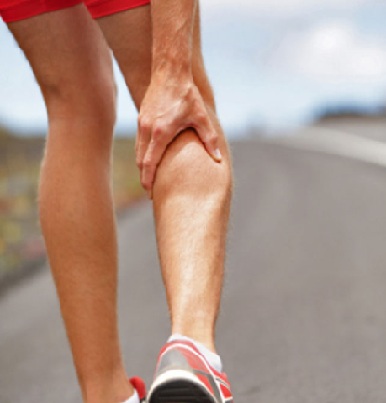How to Stop Leg Muscle Cramps
A muscle cramp is a painful contraction or tightening of a muscle. Usually it occurs in the legs. Leg cramps commonly occur in the calf and hamstrings, but sometimes may occur in the thigh or foot.
When muscle cramps happen, a muscle involuntarily contracts and you feel a hard lump at the point of pain. There might not be apparent reasons for the cramp, but there are certain conditions that cause it. Some of the causes are:
- Cramps are caused by excessive exercise, injury, or overuse of muscles, later months of pregnancy, exposure to cold temperatures or cold water, medical conditions such as blood flow problems, kidney disease, thyroid and multiple sclerosis.
- Cramps may occur by standing on a hard surface for a long time, awkward positions of your legs while you sleep.
- Deficiency of potassium, calcium and other minerals in your blood also causes cramp.
- Dehydration may causes cramps.
- Certain medications such as antipsychotics, steroids and statis can also cause cramps.

Some of the reasons that causes fatigue are your muscle is fatigued or overused, your body is dehydrated, or you might not be getting enough electrolytes. Minerals such as potassium or magnesium help your muscles work more smoothly and fluids help your body process these minerals.
Stoping Muscle Cramp
Stretching: You should relax cramping muscle. Lightly stretch the muscle, gently holding it. You can massage the muscle during the stretch or after that. You can also apply heading pad to the affected area. You should stop any activity that caused the cramp.
Magnesium: You can take magnesium supplement under a doctor’s guidance. You can also eat food rich in magnesium such as seeds and nuts.
Hot Soak: Many trainers recommend application of magnesium on the outside of your body, in the form of Epsom salts. You can put Epsom salt into a wet cloth and press it onto a cramped muscle.
Hydration: You have to keep yourself well hydrated. It might take longer to help, but it will stop further cramp. You drink plenty of fluids and can also take sports drink.
Get Moving: You start walking around. It sends the signal that your muscle needs contract and then relax.
Most Searching Terms:
- Prevent Leg Muscle Spasms
- Leg Pain Muscle Twitching
- Aching Legs Muscle Twitching
- Thigh Muscle Cramps Treatment
